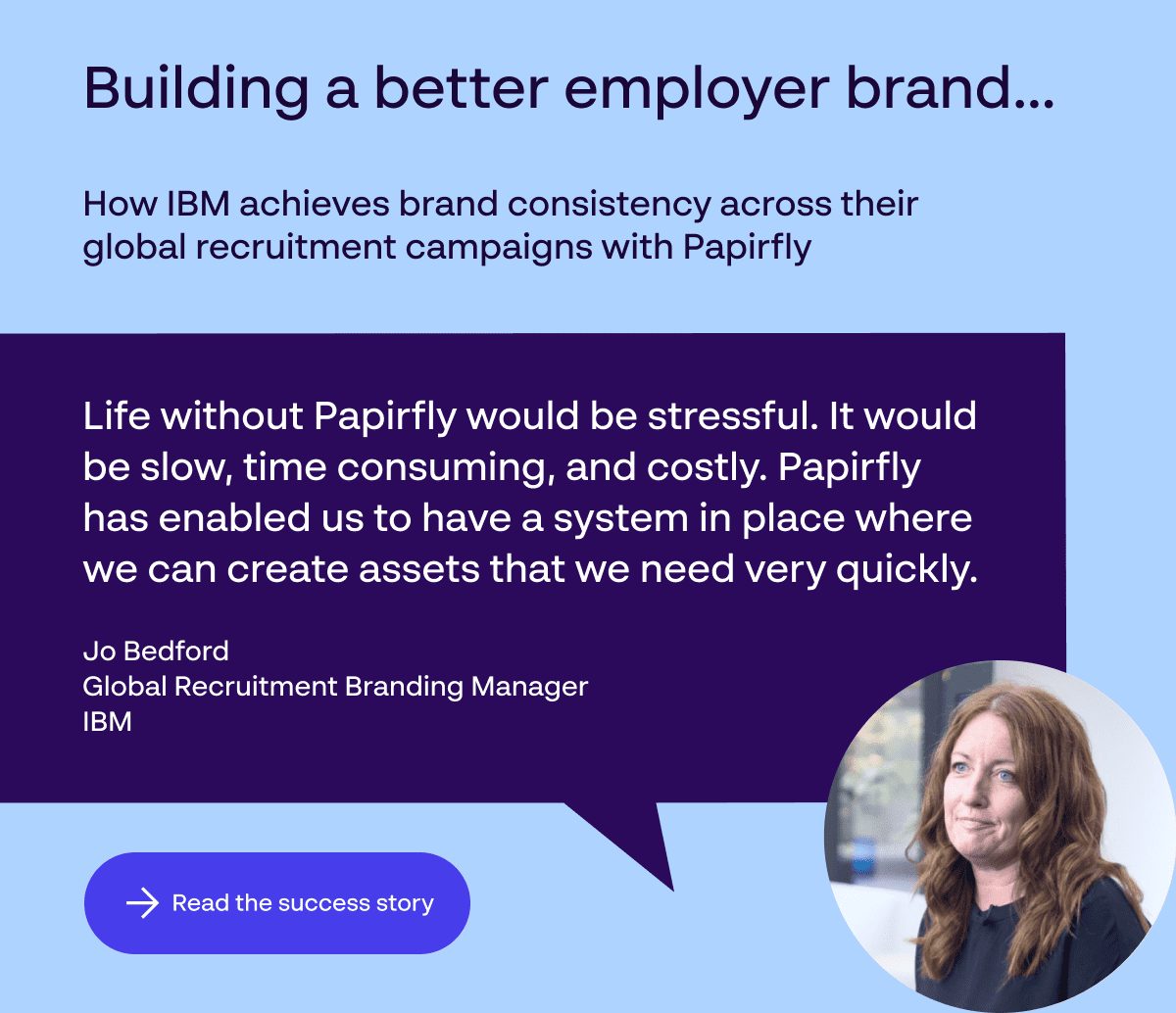Attracting top talent takes more than strong compensation packages. Today’s more discerning job seekers are looking for employers that reflect their values and create work cultures that suit them.
With trust, transparency and authenticity at the forefront of candidates’ minds when searching for a new role, how can you make your employer brand stand out in an ever-competitive talent market?
The solution lies in leveraging the power of your workforce, empowering them to become true ambassadors for your employer brand.
In this helpful guide, we’ll explore what brand ambassadors are, how to encourage your colleagues to embrace this responsibility, and why an approach like this is so valuable for your recruitment efforts.

What are employee brand ambassadors?
An employee brand ambassador champions the organisation they work for through their personal profiles and in their day-to-day lives.
While you can nominate anyone from any department to become an employee ambassador (the more the merrier!), the best advocates are typically individuals who personally embody your employer brand values and genuinely love working for you. Authenticity is key – shrewd job candidates can see through any half-hearted or “forced” employee advocacy.
Promoting the company in everything from social media posts to testimonial videos, blog posts and news stories, employee ambassadors add an extra layer of trust to your employer branding and give potential applicants a glimpse into what it’s really like to work for your organisation.

6 steps to transform your employees into brand ambassadors
Capturing the attention of modern candidates and gaining a competitive edge in the crowded talent market requires more than simply stating what your company stands for. You must demonstrate how your Employer Value Proposition (EVP) and employer brand values translate to your working environment.
That’s why employee brand ambassadors are so valuable. They live and breathe your business every day, and can give potential candidates an unfiltered look at your company culture. They make it easy for top talent to understand your organisation and picture themselves within your team.

However, as amazing as it is for eager employees to post about your business of their own accord, this can become haphazard and irregular over time. Like any successful marketing strategy, unlocking the true potential of your employee ambassadors demands a thoughtful, structured approach.
Step 1 – Understand the conversation around your employer brand
Before turning your employees into brand ambassadors, first focus on conducting a thorough brand audit of your existing touchpoints.
While your company’s employer brand ecosystem and the attitudes of your employees will be unique, here are a few ideas to recognise the vibe surrounding your workforce:
- Explore where employees new and old are leaving reviews about your organisation
- Ask your team to learn if they already advocating for your brand online or in person
- Assess if potential candidates are talking about your business, and find where those conversations are happening
With this foundational understanding of people’s feelings towards your employer brand and their willingness to shout about your culture, you can better determine how your employee ambassador program must work in practice.
The last thing you want is to enter this process blindly, encouraging employees who are unenthused by your branding to speak up, or proceed without acknowledging peoples’ existing advocacy efforts. Doing the initial research will guide you on how to get the most out of your ambassadors – and outline if any initial rehab of your employer brand strategy is needed before you reach the next step.

Step 2 – Seek out the right ambassadors
Every employee is a potential spokesperson. To identify the right people to put in the spotlight, it’s first imperative that you actively “audition” your options.
This might involve referring to your initial audit and shortlisting individuals already batting for your brand online. After all, who better to tell the world about working in your enterprise than those who show their support for you unprompted?
You could also use data inside your company to find people actively engaged with your business. In practice, this could mean talking to people who frequently spearhead internal initiatives, are more productive, or who have been with you for a long time.
Other factors that help determine the best advocates for your employer brand include:
- Employees with substantial social media followings, especially on LinkedIn
- People who represent different departments or types of employees on your team
- Employees already highly regarded or well-known in your industry
- People who advocate for or have a keen interest in DEIB trends
Whoever you choose to represent your organisation, confirm they share a genuine enthusiasm for their work and your organisation. As we’ve said above, authenticity is integral to a strong employer brand – and it all starts with the people you choose.
Step 3 – Establish a tone that’s natural for your advocates
When ambassador-shared social content can generate 24 times more engagement than traditional branded materials and build significant trust among future recruits, you start to understand the power your people can add to your brand materials.
However, with such impressive figures, you might be tempted to apply the same rigid, consistency-focused tone that defines your enterprise’s offline and online presence. Restrictions like these can strip away the very thing that makes this strategy so effective – authenticity.
So, when it comes time to establish your employee ambassador guidelines, leave room for what comes naturally to your employees. Don’t dictate the language they must use but be specific about the topics to avoid – it can help make ambassadorship duties less daunting.

Step 4 – Invest in educating your teams
As employees come and go, how do you bring new hires up to speed on what your brand stands for and maintain a globally consistent employer brand?
It all starts with a dedicated brand hub. Housing ambassador guidelines, exemplary employee advocacy assets, EVP documents and more, this technology can store everything your ambassadors need in a single, accessible portal to preach your brand to the masses.
Alongside these powerful employer brand solutions, it pays to invest in employee training for your representatives, particularly on social media usage. This is important for two reasons:
- Firstly, access to learning and development opportunities is one of the biggest incentives for Gen Z job seekers, and can inspire new and existing employees to speak highly of your brand
- Secondly, the skills your ambassadors gain will give them the confidence to post and grow their following, avoiding common pitfalls or mistakes that risk tarnishing your image

Step 5 – Reward your most active ambassadors
Some employees will immediately fly the flag for your company on every channel. Others may not be as outspoken and need a little more coaxing.
While you can’t force anyone to be an ambassador, you can reward those who take this leap. Employee recognition is a powerful motivator. Whether this takes the form of tangible gifts like branded merchandise and extra annual leave, or shout-outs in the company newsletter or on your main company social feeds – there are numerous ways you can inspire advocacy within your company.
Alternatively, encourage employees to contribute to the formation and evolution of your employer brand and company culture. When your people feel personally invested in your organisation’s progress and that their voice matters, they are more likely to use it in your company’s best interests.
Step 6 – Empower your strongest advocates to share
With your touchpoints accounted for, guidelines established and ambassadors shortlisted and educated, you almost have everything in place to inspire employees to become brand ambassadors. There’s just one barrier left to overcome – on-brand asset creation.
Traditionally, this is one of the biggest barriers to any strong, consistent employee ambassador programme. Unless you are a design-focused organisation, your ambassadors may lack the skills or knowledge to craft quality collateral for their channels. And even if your team contains expert designers, that can still be a massive drain on time and resources.
The solution to this is smart design template software. With this providing a base for your employer branding and an easy-to-use interface for users of any design expertise, your ambassadors can feel empowered to create powerful content without:
- Compromising brand consistency
- Wasting precious time and resources
- Hurting their own personal brands
You could assign this duty to your in-house designers, but ad hoc requests from representatives eat up resources and can be difficult to execute, requiring time-consuming back-and-forth exchanges to realise their original vision.
With a more universal, accessible brand management platform at your employees’ fingertips, you can unlock your people’s potential and make sure you never need to micromanage their advocacy posts.

Elevate your employer brand with a robust employee ambassador programme
Although the content you publish on your corporate channels plays an essential role in attracting top talent, your employee brand ambassadors can be the biggest difference-makers when harnessed effectively.
By showcasing your company’s culture and daily work life, advocacy materials give potential applicants a clear picture of what to expect. This transparency and personal interaction helps them determine if your organisation is the right fit for them, and makes them enter the job application stage with real enthusiasm.
The result? Brand reputation and brand awareness improve. Recruitment efforts become more impactful and more successful. And the time and money required to attract top talent is minimised long term.
Engaging employees within your organisation through initiatives like ambassador programmes can also have a meaningful, positive impact on your company at large:

Combined with the right talent acquisition software, your global employees individually and collectively can be the deciding factor for your company’s next top hire.

